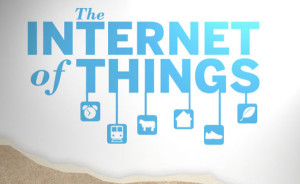Mobile connected devices may make life easier for consumers in the long run, but today they present a bundle of user headaches, a panel of industry leaders said Tuesday.
Smart homes, Internet-connected cars and wearable devices represent the next generation of mobile gear beyond smartphones. The new systems will coexist with phones for at least the next few years, though given the changes that have occurred since the iPhone’s introduction in 2007, it’s hard to predict what mobile will look like 10 years from now.
But beyond general convenience and style, these devices can still be awkward, and it doesn’t get easier as they proliferate, panelists at the Open Mobile Summit said.
“We’re about to hit the ceiling of what people are willing to babysit,” said Mark Rolston, chief creative officer at Frog Design. “How many devices do you want to try and keep alive and awake throughout the day?”
Managing devices is also the biggest worry for Ro McNally, vice president of device technology at Verizon Wireless. It’s a challenge both for systems engineering and for the subscriber’s experience, she said.
Between linking devices, entering passwords, managing home Wi-Fi and dealing with corporate IT departments at work, connected life is already hard for some consumers, Rolston said.
“They are network admins, by accident,” he said. That’s created a business opportunity for someone to take over those tasks as a virtual service, he said.
There was some praise for connected devices. Jan Uddenfeldt, senior technology advisor to Sony’s CEO, called the company’s SmartWatch “something you can actually use” – in its current iteration.
But there are still too many challenges for users, according to Rick Osterloh, senior vice president of product management at Google’s Motorola Mobility subsidiary.
“If you look at what’s there today, it’s terribly broken for the end user,” Osterloh said. “There’s so much to fix.” He cited manual setup of wireless connections via Bluetooth, Wi-Fi Direct and a hornet’s nest of other technologies.
“This is a totally unresolved problem for users. It’s so bizarre to me that the underlying tech is exposed to the users in your settings,” Osterloh said. Within three years, that will change, he said.
The whole premise of mobile interfaces is wrong, according to Osterloh and others. Devices should be asking users what they want and learning from prior events rather than always forcing users to ask, they said.
“There’s just a million use cases you can think of where today there’s interface to try to understand what the user wants, and in the future there should just be action that does the right thing,” he said. For example, a car should automatically connect to the Internet, by itself or through the phone, and when it reaches the driver’s home it should turn on the house lights automatically, he said.
Home tech also needs to be transformed, Frog’s Rolston said. Using a phone to control devices in the home doesn’t make sense, he said. The many connected appliances and control should together form a computer of their own.
“The computer is not this box in the corner, or box in your pocket, it’s something you are surrounded by,” Rolston said. “We have a difficult time with that right now. … We built a whole industry marketing and developing around boxes.”






